Kratky Method: Growing Food Without Soil
March 27th, 2022
6 minute read
Growing food is one of the fundamental requirements for a civilization. At a more personal level, a family without food will either starve or be dependent on others for its survival. As a husband and father, this idea is repugnant to me. I’m guessing it is abhorrent to you as well.
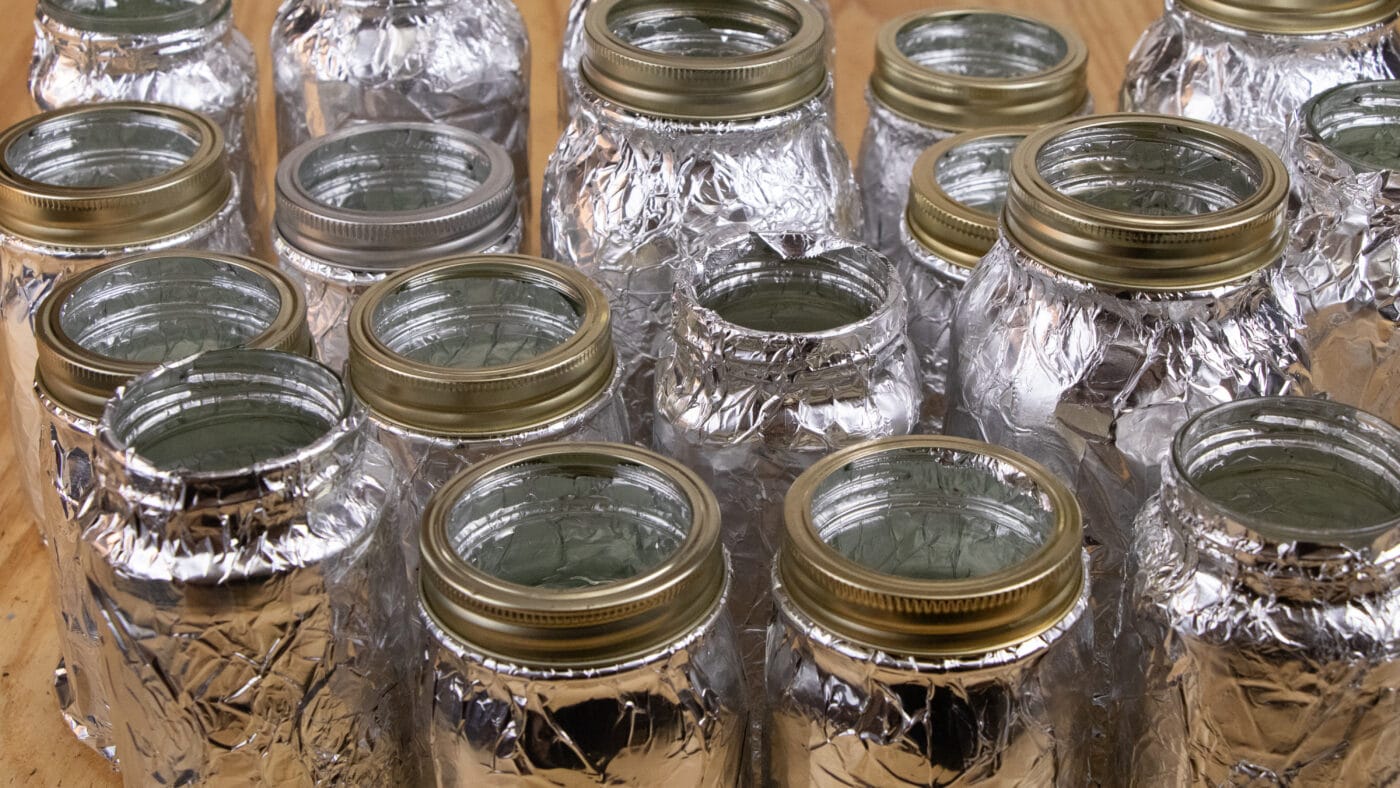
I am responsible for feeding my family — even if times get tough. Part of this responsibility means my wife and I plan for future problems and store food for days we hope never come. It also includes having the knowledge and tools to provide fresh food during difficult times.
Gardening is available to most everyone. Even if you don’t have a single square foot of yard with which to work, I will show you how you can use a simple hydroponic system to grow fresh food inside your own home.
Basics of Hydroponics
Hydroponics is a system of growing food without soil. There are a multitude of different systems that use some variation of delivering oxygen and nutrients to the plants with water.
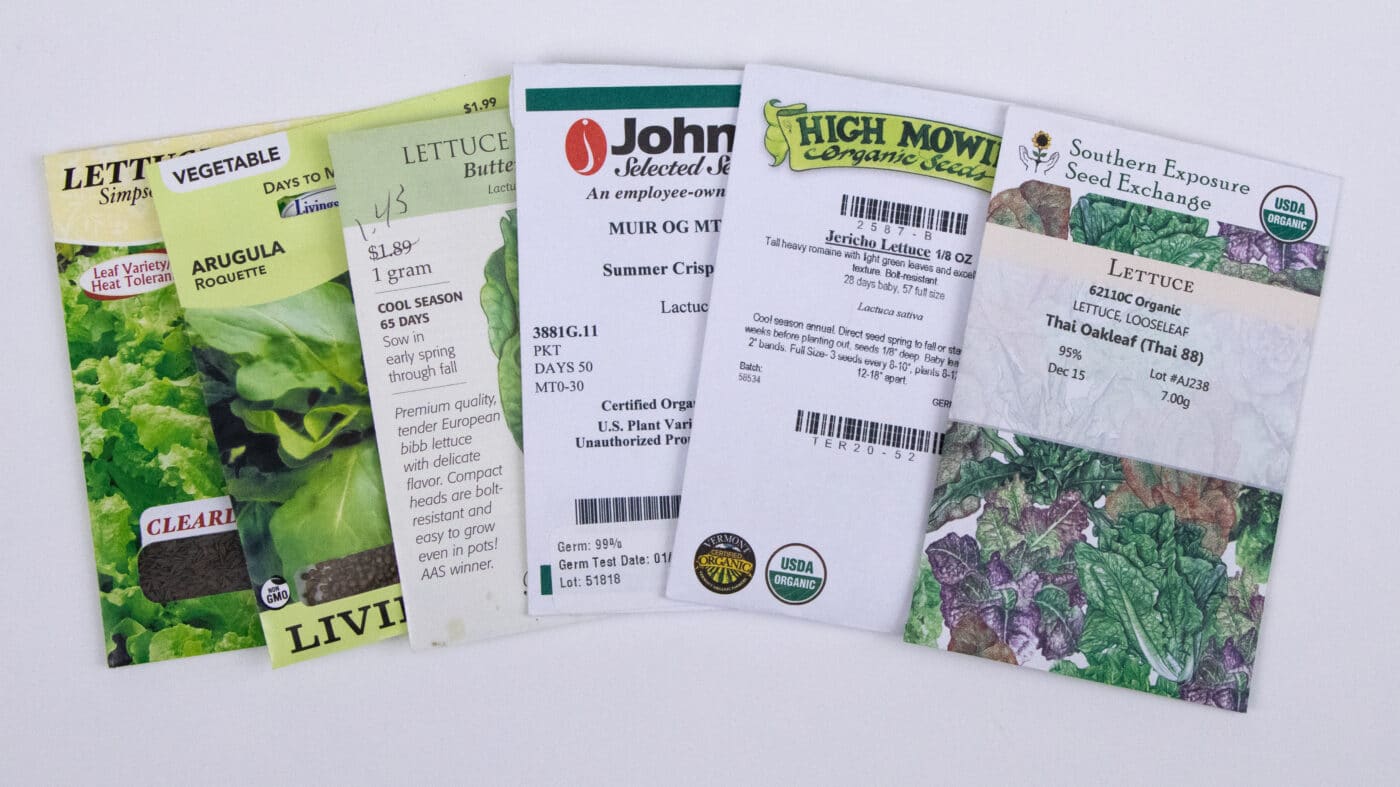
The concept of hydroponics is not new. Francis Beacon, the man credited by many with influencing the development of the scientific method, wrote about it in his 1627 book, “A Natural History”. Some modern research suggests that the ancient world may have used hydroponics thousands of years ago.
Many hydroponic systems are complex, but you can get amazing yields with simple systems that can be built inexpensively. The one I will describe is called the Kratky method. This is an easy to maintain system that you can employ on a shelf, tabletop or sunny windowsill in your home.
What Is the Kratky Method
Most hydroponic systems require electric pumps that use a variety of methods to bring both nutrients and oxygen to the roots of the plants. What makes the Kratky method so interesting is the lack of pumps. In fact, the Kratky method of hydroponic growing is largely passive. Other than picking your harvest, you may not have to do anything after your initial set up.
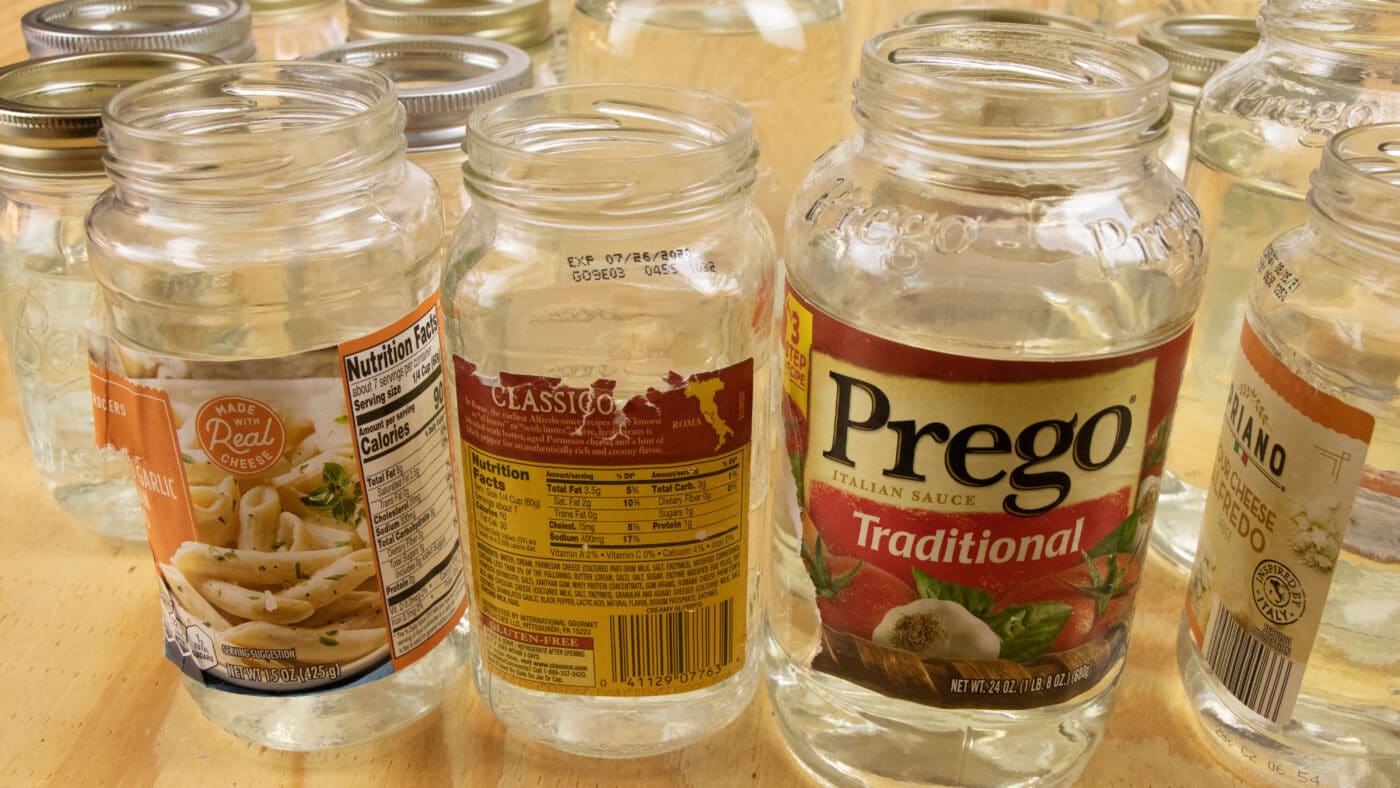
Here’s an overview of how to set up the Kratky hydroponics process.
Step 1: Select your growing containers.
You can grow vegetable plants in nearly any kind of container. I’ve used both storage totes and jars. Canning jars work very well, but I use a lot of old, recycled spaghetti sauce jars.
The larger the container you use, the more nutrient solution you can store. But, keep in mind, water is very heavy. You do not want to overload a table or shelf.
You will need to mix nutrients with the water to form a solution the plants can use. There are a variety of solid and liquid nutrients available, and most brands will perform well in a Kratky system. You want to be careful to select hydroponic nutrients and not a general purpose fertilizer that you would use in a soil-based garden.
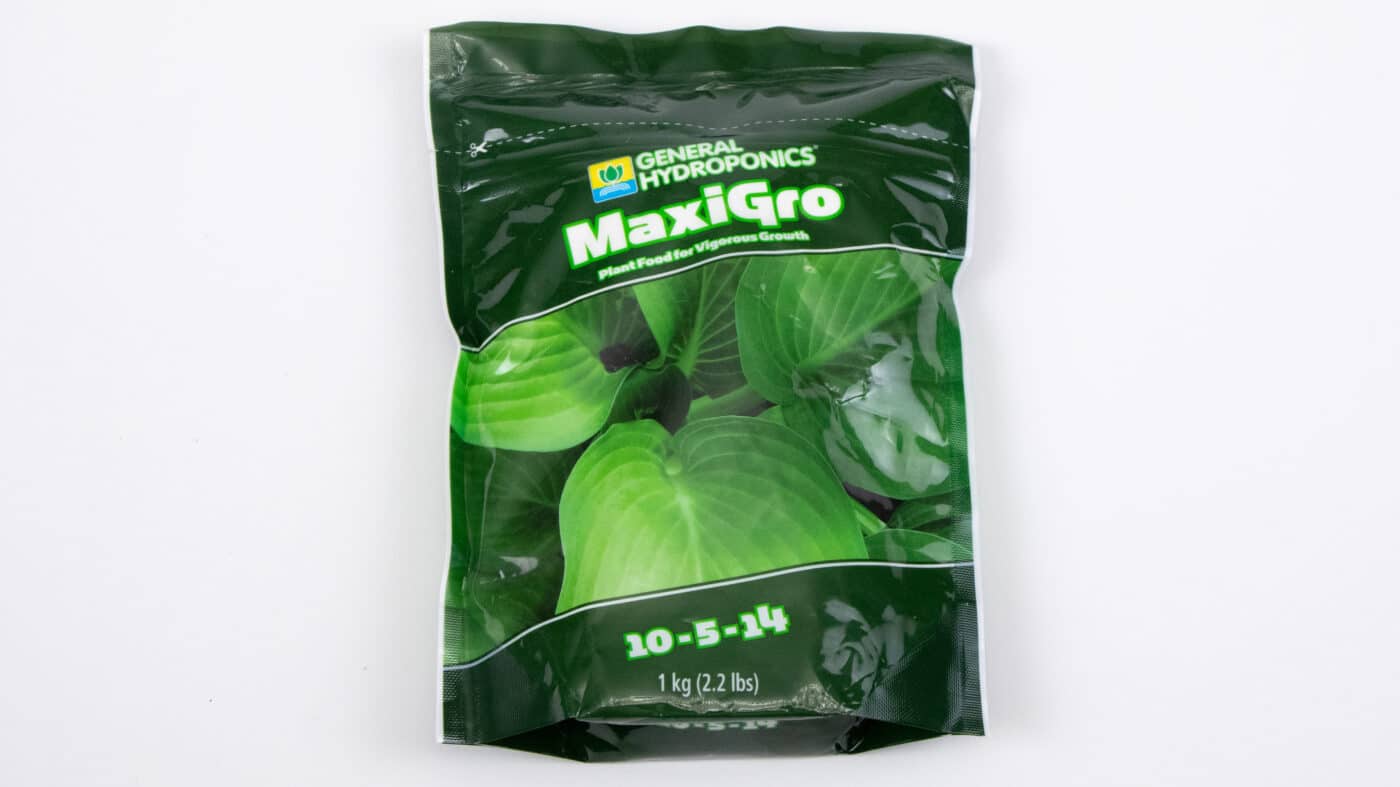
Tip: Nutrient solutions can breed algae if exposed to light. To prevent this, use an opaque container or wrap the container in aluminum foil.
Step 2: Start your seeds in net cups with a growing medium.
Even though your plants are growing in a soilless environment, they will still need some support at their base. Net cups are plastic cups with large holes in them. You fill the net cup with an inert product like rockwool or pearlite and plant your seed in it.
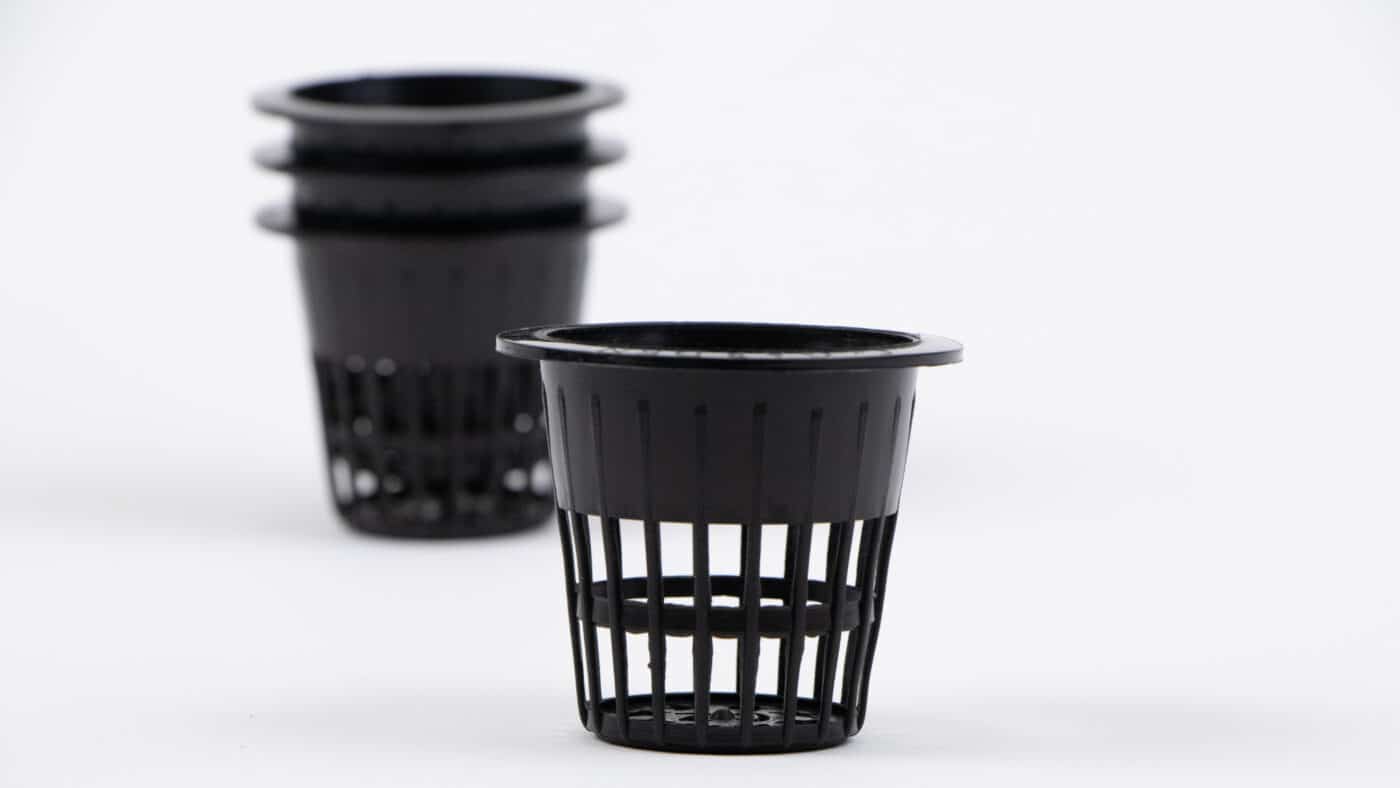
As the seeds begin to grow, they will send out roots. When the roots emerge from the sides of the net cups, move the plants to the jars or other containers.
Tip: 2” net cups will fit perfectly in the mouth of many jars. They will also fit into a canning jar with a ring screwed on.
Step 3: Ensure the plants get enough sunlight.
Sunlight is the fuel of plant growth. Without enough of it, your plants will get spindly and not produce as much food.
A brightly lit window can be enough sunlight for some plants. Others will require placement outside for a full dose of sun. I invested in special LED lights that provide full spectrum light. Mounted to a shelving unit, the lights allow me to precisely control how much light my plants get. While not necessary, they provide the optimum amount of light for fast plant growth.
Tip: When using artificial lighting, invest in an inexpensive mechanical timer that will automatically turn the lights on and off for consistent lighting every day.
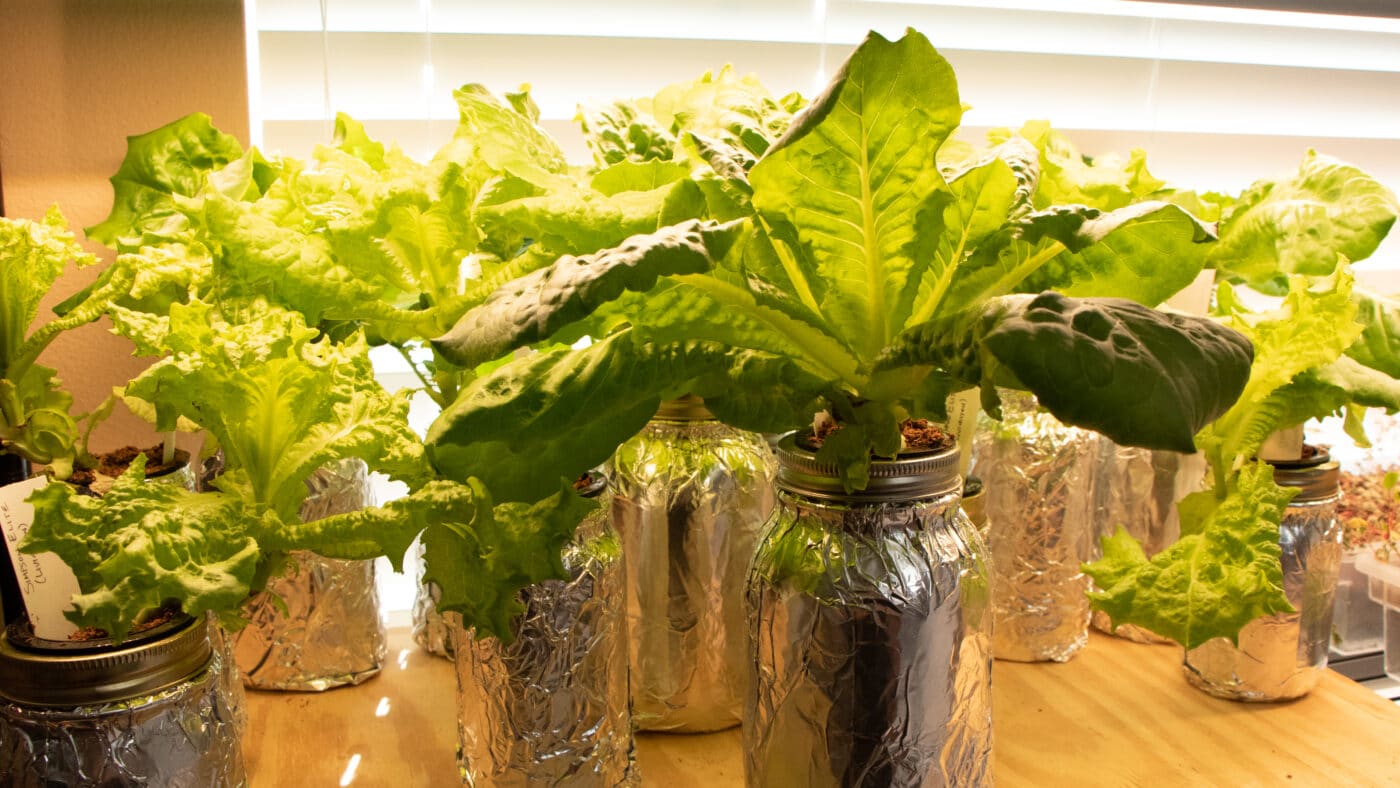
Step 4: Ongoing Care
At this point, your plants should grow with little input from you. Check them to ensure that the nutrient solution never drops too low. When you add nutrient solution, never fill the reservoir all the way. For the Kratky method to work, the upper roots of the plant need to be exposed directly to the air. Only then can they absorb oxygen.
Tip: Keep an old milk jug or soda bottle filled with your nutrient solution in the same area as your plants. This will allow the solution to be at the same temperature as the existing solution and not shock the plants.
Getting Started with Lettuce
Greens are a great starting place with Kratky hydroponics. They are easy to start, grow rapidly and provide good nutrition. In a situation where you are relying on stored food, having a fresh salad can be a real treat. Plus, lettuce can deliver vitamin A, vitamin K, iron, folate, fiber and other nutrients.
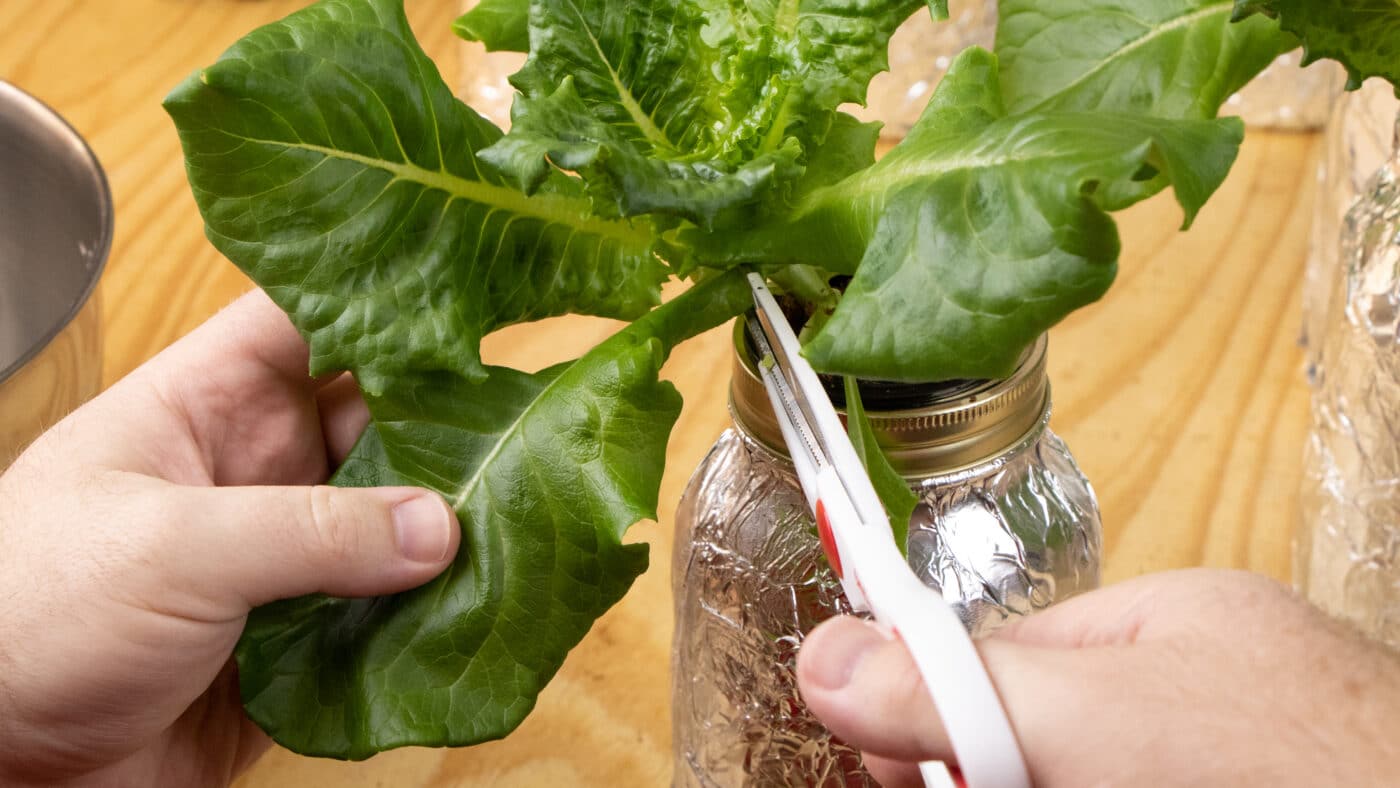
The two lettuces I’ve had great success with are buttercrunch and Simpson Elite. Both have nearly identical growing times in a Kratky system — about 22-25 days to the first harvest. Consequently, I grow them together for a little flavor and color variety in my salads. Both have a good salad flavor with buttercrunch being the milder. You can get these seeds online or in most of the home improvement stores.
Arugula is often suggested as a good green to grow in a Kratky system. I’ve had good success with it in my system growing the Roquette variety. Arugula has a distinct peppery flavor that can overwhelm a salad. When you first use it, go easy until you have a feel for the flavor. Finding these seeds is also easy.
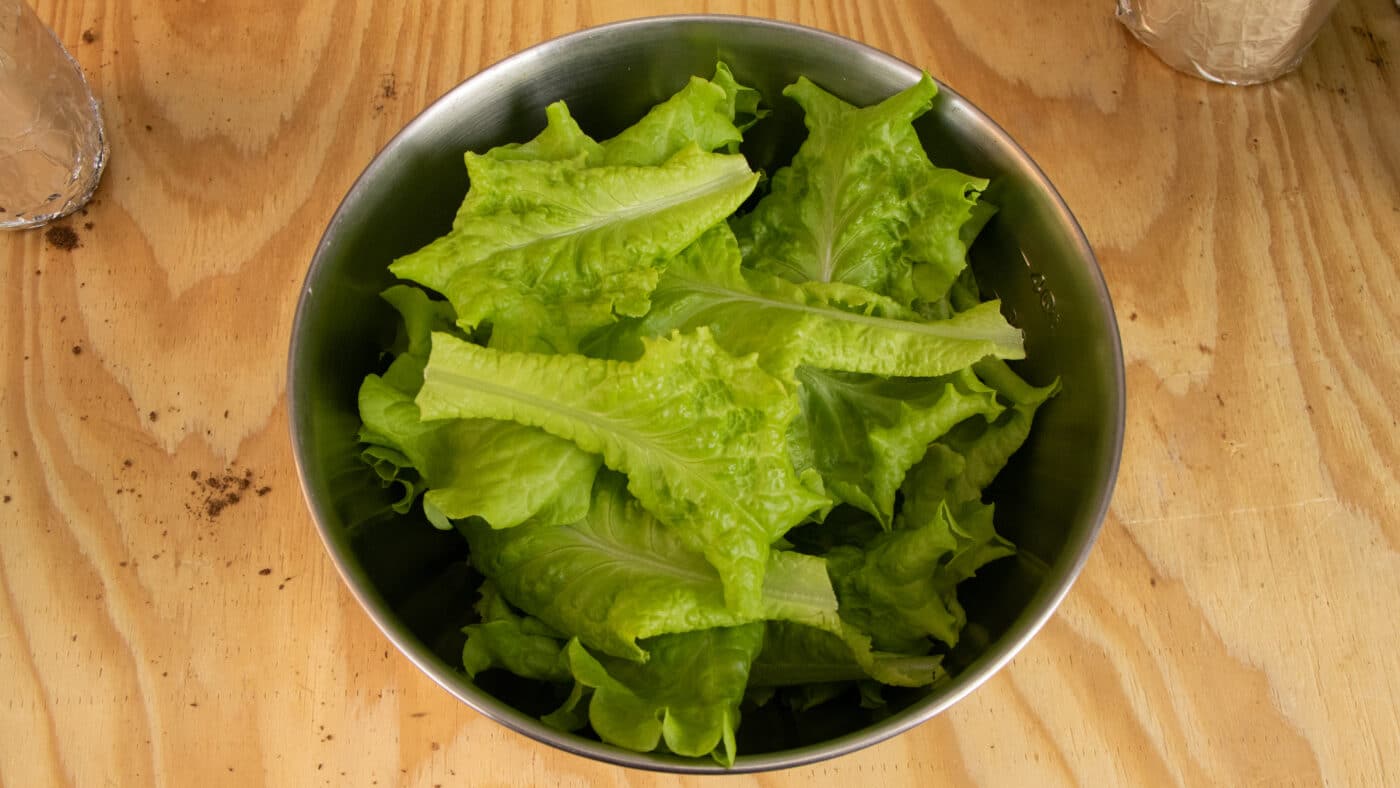
Once you get going with lettuce, you can try other vegetables. I’ve grown green beans, for example, using 5-gallon buckets. The growth is very fast on these, but they do drink a significant amount of nutrient solution. You may also want to try things like mustard greens and spinach.
Final Thoughts
Few things are as rewarding as providing your own food. It is a skill that our ancestors used to survive and one we can use to build our own resiliency and independence. If you are a parent, knowing you can feed your family is an added comfort in an increasingly chaotic world.
Editor’s Note: Please be sure to check out The Armory Life Forum, where you can comment about our daily articles, as well as just talk guns and gear. Click the “Go To Forum Thread” link below to jump in!
Join the Discussion
Continue Reading
Did you enjoy this article?

 217
217






